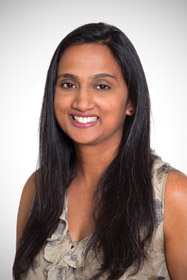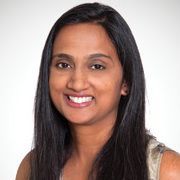 Breast cancer is the most common diagnosed form of cancer in women after skin cancer. There are a number of factors that put women at a higher risk of breast cancer such as advancing age, family history, or being a carrier of a gene mutation such as BRCA1 and BRCA 2. Other risk factors include women who started their periods before age 12, have never been pregnant, or gave birth to first children after age 30. And women who’ve had a biopsy with a diagnosis of lobular carcinoma in situ or Atypical Ductal Hyperplasia are also at a higher risk of developing breast cancer.
Breast cancer is the most common diagnosed form of cancer in women after skin cancer. There are a number of factors that put women at a higher risk of breast cancer such as advancing age, family history, or being a carrier of a gene mutation such as BRCA1 and BRCA 2. Other risk factors include women who started their periods before age 12, have never been pregnant, or gave birth to first children after age 30. And women who’ve had a biopsy with a diagnosis of lobular carcinoma in situ or Atypical Ductal Hyperplasia are also at a higher risk of developing breast cancer.
Prevention strategies
While cancer survival rates continue to improve, this is mainly due to early detection and advances in treatment leading to individualized regimens. However, there are a number of practical strategies women can take to prevent breast cancer. Here are a number of practical tips to help reduce your risk.
Attain and maintain a healthy weight. Both increased body weight and weight gain as an adult are linked with a higher risk of breast cancer after menopause. And obesity can increase your chance of developing breast cancer by 20 to 40 percent, according to the National Cancer Institute. If obesity occurs in the post-menopausal years, it can be more harmful. Avoid excess weight by balancing your food intake with exercise.
Be physically active. Daily exercise for at least 30 minutes a day is important in reducing the risk of breast cancer. Fat cells produce estrogen, which is linked to breast cancer in the post- menopausal years. Exercising for more than four hours a week can reduce your risk by 30 to 40 percent, especially in premenopausal women.
Limit or avoid alcohol. Drinking alcohol is considered an important risk factor, which fortunately can be modified. It’s best to limit yourself to one alcoholic beverage a day. (A drink is 12 ounces of beer, five ounces of wine, or 1.5 ounces of 80-proof distilled spirits (hard liquor.)
Kick the habit. Research indicates an association with smoking and breast cancer, especially in premenopausal women, so avoid smoking cigarettes.
Adopt a Mediterranean diet. The Mediterranean diet has been long recommended as the ideal for preventing heart disease. It also appears to be important in preventing the incidence of breast cancer. This diet incorporates extra virgin olive oil, mixed nuts, plant-based foods, whole grains and legumes. Foods rich in monounsaturated fats such as oily fish (salmon, cod, haddock) are also an important part of this diet. Some sources claim that flax seed can protect from breast cancer. Unfortunately, there is no definitive evidence for this. It’s unclear at this time how the estrogen-like property of flax seeds affects one’s risk of breast cancer. Therefore, it’s only recommended for its beneficial effect on the digestive system at this time.
Load up on cruciferous vegetables. Cruciferous vegetables are rich in phytonutrients, which can be an important tool in fighting breast cancer. They include broccoli, kale, cabbage, Brussels sprouts, collard greens and cauliflower.
Consider birth control choices. Hormone-releasing birth control such as the birth control pill or IUD that release hormones have shown to have a very small risk of breast cancer, which improves when discontinued.
Talk to your doctor about hormone therapy. Some women use hormone replacement therapy to help with the uncomfortable symptoms that occur during menopause. If it’s used for more than three to five years, it can be considered a risk factor. For women who need long-term hormone treatment to manage menopausal symptoms, there are non-hormonal options that you can discuss with your doctor.
Early detection and screenings. Regular exams and screenings help many women survive breast cancer. Be sure to have routine mammograms. The America Cancer Society recommends that all women should begin having yearly mammograms by age 45. Beginning at age 55, women can schedule mammograms every other year. Some women opt to start annual mammograms as early as age 40, particularly if there’s a family risk. And be sure to do monthly self-exams. Sometimes, breast cancer can be detected by noticing changes in the appearance of the overlying skin. There might be a dimpling or peeling, scaling or crusting, pitting or redness of the skin. It might simply be a change in size or shape of the breast sometimes. A newly-inverted nipple requires medical attention. And, of course, a breast lump or thickening that is different from the surrounding tissue requires a visit to your doctor.




